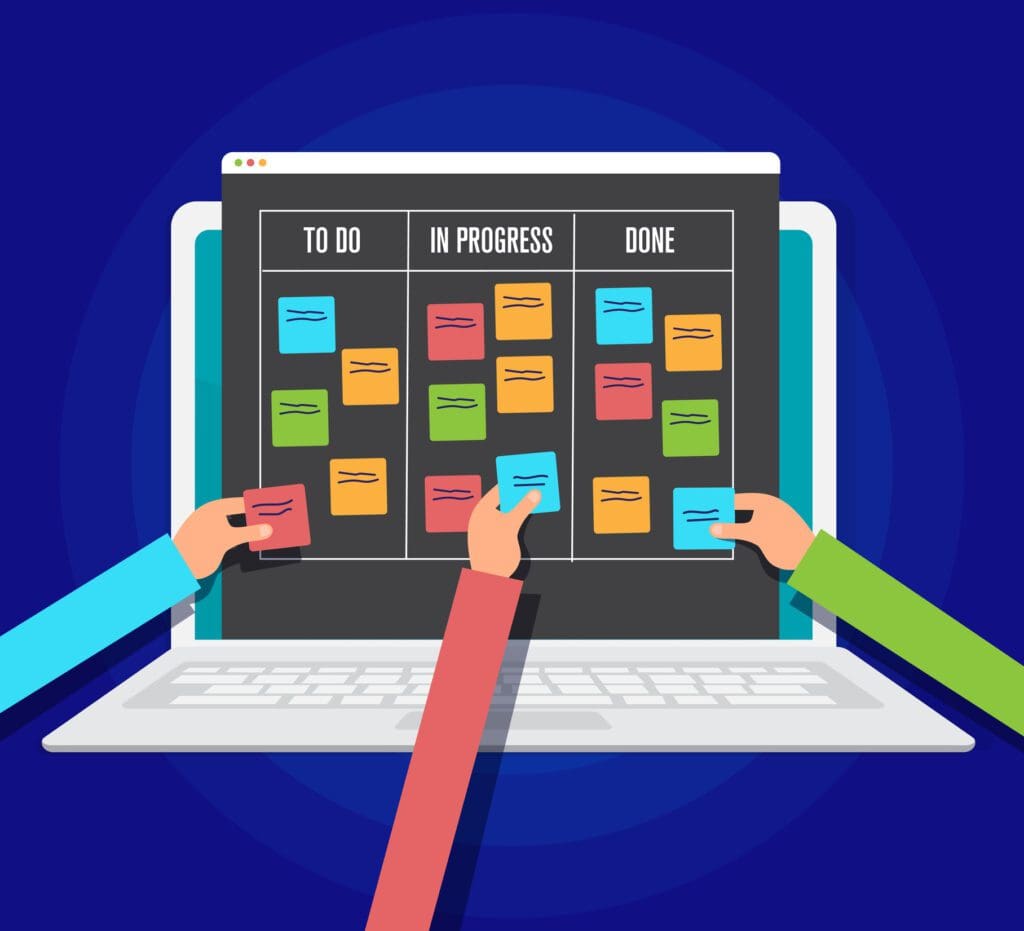Table of Contents
Embracing the Power of Cross-Functional Teams in Agile
In this fast-paced and ever-evolving landscape, agility has emerged as a crucial factor for success. Agile methodologies have completely transformed how teams work together and deliver value to their customers. And at the heart of this agile revolution lies the concept of cross-functional teams.
In this blog post, we’ll embark on a journey to uncover the true significance of cross-functional teams in the agile realm and explore how they play a pivotal role in driving successful project outcomes. So, let’s dive right in and discover the magic of cross-functional teams in agile software development!
Defining Cross-Functional Teams
Picture a cross-functional team as a superhero squad, ready to conquer software development challenges with their extraordinary powers! Instead of each team member having just one superpower, like traditional superheroes specializing in their unique abilities, cross-functional teams are like the Avengers, assembling a diverse group of heroes with an arsenal of skills.
Imagine the team as a hilarious mix of characters. You’ve got the coding wizards who can turn coffee into code, the testing gurus who can spot bugs faster than a speeding bullet, the design maestros who can transform ugly interfaces into beautiful works of art, and the product owners who have the superhuman ability to balance customer demands and project goals.
This dream team of developers, testers, designers, and product owners joins forces, combining their superpowers to tackle any challenge that comes their way. Whether it’s building a sleek user interface, squashing bugs, optimising performance, or meeting tight deadlines, they’re a force to be reckoned with.
Cross-functional teams are composed of individuals with diverse skill sets and expertise working towards a common goal. Unlike traditional siloed teams, where each member specialises in a specific role, cross-functional teams encompass a range of skills necessary to deliver a complete product or solution.


The Benefits of Cross-Functional Team
Increased Collaboration and Communication:
Cross-functional teams foster a collaborative work environment by bringing together professionals from different backgrounds and skill sets. This setup encourages individuals to share knowledge, ideas, and perspectives, improving problem-solving and innovative solutions.
Flexibility and Adaptability:
Cross-functional teams are adaptable and can easily respond to changing requirements or priorities. With a diverse skill set, these teams can quickly pivot and reallocate resources as needed without being overly reliant on specific individuals or roles.
Enhanced Ownership and Accountability:
In cross-functional teams, members collectively share ownership of the project. Since the team is responsible for delivering a complete product or feature, each individual feels accountable towards the result.
Faster Time-to-Market:
Instead of waiting for one team to finish their part before the next team can start, cross-functional teams can work concurrently, accelerating the overall development process. This streamlined workflow enables faster iterations, allowing products to reach the market sooner and giving organisations a competitive edge.
Continuous Learning and Growth:
Working in a cross-functional team exposes individuals to diverse skills and expertise, fostering knowledge sharing and continuous learning. This leads to personal and professional growth as team members broaden their skill sets and develop new competencies.
Roles in Cross-Functional Teams
In cross-functional teams, various roles collaborate and achieve common goals. Some common roles found in cross-functional teams include:
- Developers/Engineers: These team members are responsible for writing code, developing software, and implementing technical solutions.
- Testers/QA Specialists: Testers ensure the quality of the product by conducting tests, identifying bugs or issues, and providing feedback for improvement.
- Designers: Designers focus on creating user-friendly and visually appealing interfaces, graphics, and overall user experience.
- Product Owners/Managers: Product owners define the vision and goals for the product, prioritise features, and act as a bridge between the team and stakeholders.
- Scrum Master/Agile Coach: The scrum master or agile coach facilitates the agile process, ensures adherence to agile principles, and removes any obstacles hindering the team’s progress.
- UX/UI Specialists: UX/UI specialists optimise the user experience and interface design, ensuring the product meets user expectations.
- Project Managers: Project managers oversee the planning, coordination, and execution of projects, ensuring they are delivered on time and within budget.
Working together in cross-functional teams, these roles bring diverse expertise and perspectives to the table, enabling effective collaboration and successful project outcomes. It’s important to note that the specific roles may vary depending on the organisation, project, and team structure.
Implementing and Nurturing Cross-Functional Teams
While the benefits of cross-functional teams are evident, establishing and nurturing them requires deliberate effort and commitment. Here are a few key considerations:
Balanced Skill Sets
When forming a cross-functional team, it is important to balance skills and expertise. Identify the roles and competencies required to achieve project objectives and create a team encompassing those skills.
Collaboration and Trust
Foster an environment of collaboration and trust within the team. Encourage open communication, active listening, and respect for diverse opinions. Build a culture where team members feel comfortable sharing their ideas and concerns.
Clear Roles and Responsibilities
Define clear roles and responsibilities for each team member. While cross-functional teams emphasise collaboration, it is important to have clarity about individual contributions to ensure everything runs smoothly.
Iterative Improvement
Regularly reflect on the team’s performance and identify areas for improvement. Encourage feedback and implement changes to enhance team dynamics, productivity, and efficiency.
Conclusion
Cross-functional teams lie at the heart of agile methodologies, facilitating collaboration, adaptability, and improved outcomes. By embracing the power of diverse skill sets, organisations can leverage their team’s collective intelligence and capabilities to deliver high-quality products in a fast-paced and ever-changing market. Establishing and nurturing cross-functional teams can unlock innovation, foster a culture of collaboration, and propel organisations towards success in agile software development.



